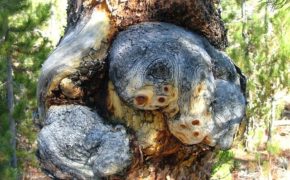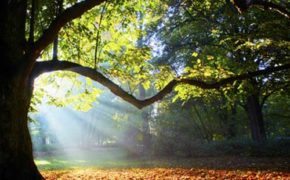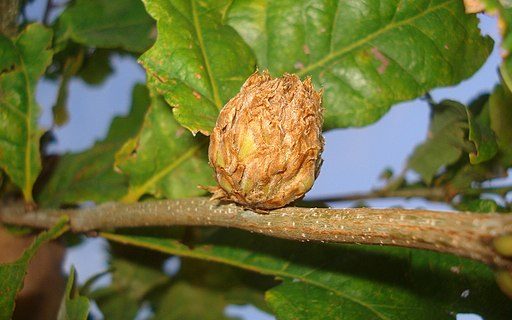
Get a quick no obligation quote It’s free and will only take a jiffy!
What is Growing on my Tree, and Should I be Worried About it?
If there appears to be something growing on your tree that doesn’t look like it should be there, you will naturally be concerned. The good news is that most things you see growing on your tree are usually nothing to worry about. But it’s good to know what’s growing, and why. Read on for an insight into the most common tree oddities.
Galls
Galls are growths that appear in a range of shapes and sizes, sometimes on leaves, other times on fruits, stems or flowers.
The deformities are caused by organisms such as wasps, mites, bacteria and fungi. Generally, they don’t cause any long term damage to a tree, although there are a few that could pose a threat, such as the oriental chestnut gall wasp. This fairly new pest produces galls on sweet chestnut trees, and if the problem spreads, there could be a significant impact on these historic trees.
If you have an oak tree and spot strange looking growths on the leaves, acorns, stems or flowers, these will usually be caused by gall wasps which have used these parts of the tree to incubate its eggs. Oak gall wasps don’t tend to negatively affect the health of a tree and no control is usually necessary. However, if the tree isn’t in general good health, then it may be more prone to suffer from gall damage. It is therefore important to keep your tree healthy by ensuring regular watering, fertilising, pruning and mulching.
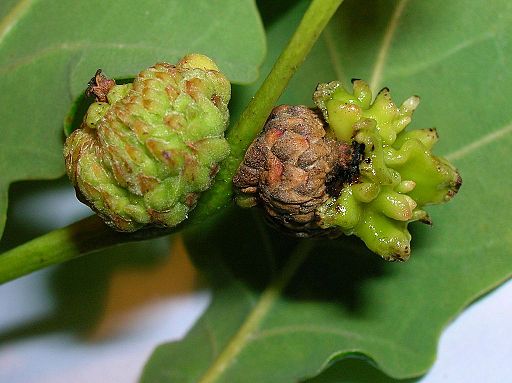
Algae
A red or green film on tree bark will usually be algae. Red algae are from the group Trentepohlia, a species that present themselves in bright shades of orange and red. The colour comes from the pigment in the algae, a carotenoid. Generally you will find this algae growing on rough, textured bark where moisture gets trapped and forms the perfect habitat.
Algae mostly affects ash, beech and oak trees, and tends to be more widespread in the south of the UK. It doesn’t cause any harm to trees, it just uses the surface as a habitat.
Mildew
Mildew is a common thing to see on trees, especially when the weather is warm and damp. It’s actually the common name given to a range of fungi, and looks much like a white residue. It appears on the leaves and, if you rub an affected leaf between your fingers, a white residue will be left on your hands.
Mostly you won’t need to worry about mildew on leaves. It’s a natural by-product of the great British weather, and will usually disappear over winter.
If you spot mildew on young saplings, it could stunt their growth. However, it is usually best to leave it till the spring to see if it clears up naturally, before considering treating with a fungicide.
Black spots
Have you seen black spots on the leaves of your sycamore tree? This is a common fungus known as tar spot (Rhytisma acerinum). Whilst it doesn’t add anything to the aesthetic appearance of the tree, there really isn’t anything to worry about.
You can stop the fungus from spreading to other trees by clearing up fallen leaves in the autumn and burning them. Otherwise, there is no need for any treatment.
Witches’ broom
If you have tangled, bush-like growths growing in your trees, these could well be witches’ brooms. These are tangled bunches of root, leaf or stem material that grow out of a single point on a tree.
Scientifically known as phyllanthies, phyllodies or chloranthies, witches’ broom is a growth known as a virescence, a growth of distorted leafy, woody or twiggy material. They are caused by microorganisms, so technically they are a type of gall. What causes them varies from tree to tree. For example on birch trees, the fungus Taphrina betulina is behind the broom.
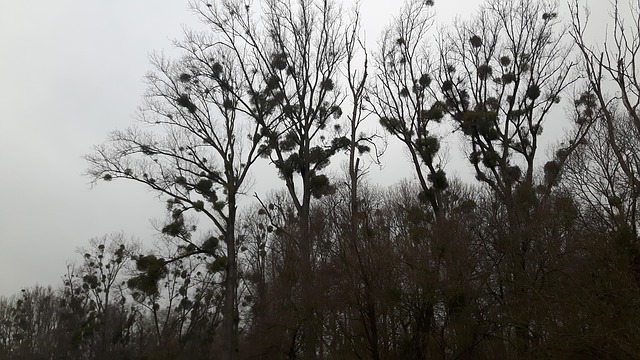
Witches’ brooms don’t usually impact upon a tree’s health. The brooms are all formed of woody growth, but the tree itself can continue to grow as normal. In fruit trees, crops are generally not affected.
Some people actually like the look of witches’ brooms, with visitors flocking to see the most spectacular displays in various UK woodlands. Others however don’t appreciate the way the brooms spoil the look of their trees. If you want to remove witches’ brooms from your trees, then you will need to call in professional help to prune the affected limbs.
Concerned about something that’s growing on your tree? Talk to TH Trees Ltd.
The health of your trees should always be your priority. If you are worried about anything that’s growing on your trees, you are welcome to contact us for individual advice.
At TH Trees Ltd we have been caring for trees across Essex for more than 15 years. For a free consultation and the helpful advice you need, please call us on 01268 642814.
Amazing service from Mark and his team. We had a problem with Bamboo that had spread from a neighbours garden. Mark kept us informed with regular phone calls and images of how the work was progressing, as we were not present the house. 1st class job and a pleasure to do business with this company.
Thank you Colin and Gillian for your kind review. It was a pleasure to be able to clear the bamboo for you.

